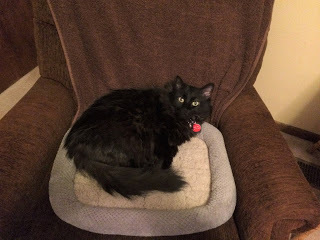Ginger Dehlinger's Blog, page 4
January 6, 2021
Christmas 2020
In the middle of the covid-19 pandemic and without the consent of Oregon’s governor, my husband and I celebrated Christmas with family. Both boys, I should call them men (good grief, Rick turned fifty last September) wanted to get away for a few days, and I guess our house looked like a good place to land. Dick and I were delighted to have them. It had been ten years since our last Christmas with both of his sons. Sean and Rick brought their significant others, too—Sean’s wife Evie and daughter Maya and Rick’s new lady friend Michelle, who turned out to be delightful.
Since every restaurant in Oregon was closed to anything except takeout or outdoor seating (even though temperatures hovered around freezing) I was in and out of our double ovens for a week: three batches of cookies, two pies, a large pan of corn bread, biscuits, blueberry muffins, pigs ‘n blankets, roasted tomatoes, stuffed peppers, and a 14-pound turkey. I haven’t cooked and baked this much in a week since…… well, forever! Thankfully, nothing was a culinary disaster, and I only burned myself once.
Our guest bathroom was busy, too, as was the refrigerator, dishwasher, and door to the liquor cabinet. Every sheet in our house was in use as well as most of the towels. We had to empty the kitchen garbage every day, while stuffing our hefty recycle bin with flattened boxes, food containers, and torn Christmas wrappings.
Late nights, early mornings (even after too much alcohol the night before), hugs every time we felt like it, belly laughs, tons of reminiscing—it was a fabulous week.
So……as we begin 2021 with a covid-19 vaccine and visions of mask-less faces dancing in our heads, I leave you with this somewhat appropriate question, given my rather frantic Christmas…….
If a redhead goes crazy, does Ginger snap?


December 6, 2020
Christmas at the Ophir Loop Hotel
Toward the middle of December, Clara began preparing for Christmas. The aroma of gingerbread and other sweet-smelling treats floated through the hotel every day as she and Hannah filled the cellar with baked goods. Soon pine boughs appeared in the hotel entry as well as over the dining room windows.
Clara had seen a box of ornaments in the cellar, and imagining a Christmas tree in a corner of the dining room, she asked Yoshiro to hitch up the sleigh and bring back a small conifer. Yoshiro had learned about Christmas trees the previous December when the hotel’s owner helped him find a tree of the proper size and shape. True to a tradition he hadn’t grown up with in Japan, he returned with a healthy six-foot spruce.
Mr. Beale was eating supper when the hotel’s eager young handy-man dragged the tree into the dining room. He finished his coffee, and then helped Yoshiro build a simple wood stand for the tree. After making sure the tree stood perfectly straight, Mr. Beale returned to his table and finished his meal.
Sophie, her moon face beaming, walked into the dining room carrying the box of Christmas ornaments. She set it on the floor, and then reached into the box and pulled out a green glass ornament which she attached to a branch with a piece of red ribbon.
Mr. Beale pulled out his pocket watch. “I don’t have to go to work for a few minutes" he said to Sophie. "May I help you hang those ornaments?”
Sophie shrugged her shoulders and gave him a puzzled look. “No know.”
Thinking Sophie might not have enough grasp of English to understand what he wanted, he walked into the kitchen and asked Clara who was sitting on a stool, peeling potatoes.
“I’d be pleased if you’d let me help decorate the tree, Mrs. Reese. I don’t have to leave for half an hour.” His dark brown eyes, droopy at the corners, sparkled with the glee of a young boy.
Clara felt her face redden. Not only had she been nosing around this man’s reading material when she cleaned his room, he had been sneaking into her dreams of late, dreams she pooh-poohed as some strange manifestation of Rocky Mountain altitude sickness.
“That would be kind of you, Mr. Beale.” She went back to peeling the potato she had been working on.
“Will you tell the maid and the Japanese boy I am allowed?”
Clara put down the potato and wiped her hands on a towel. With Yoshiro and Sophie watching, she took one of the ornaments out of the box and handed it to the night watchman, nodding and smiling while he hung it on a branch.
Yoshiro grinned broadly. Pointing at the ceiling, he said, “Up now, Missus,” and then he hurried outside to shovel snow off the roof.
With quiet resolve, Sophie squatted next to the box of ornaments and picked out several of the prettiest ones before Mr. Beale could get his hands on them.
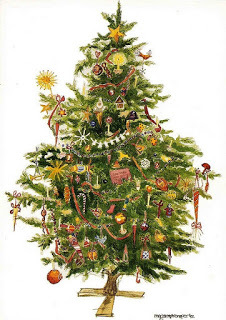
November 6, 2020
Cat Connections
While shopping with friends the other day, I ran across Writers and their Cats by Alison Nastase, and being a writer with a cat, I had to buy it. In no way do I consider my work to be on a par with Hemingway, Sylvia Plath, Alice Walker, or the other 42 writers in this book, but wandering through the 100 pages was pure delight for a cat lover like me.
Each of the book’s one-page cat tales is accompanied by a picture of the writer along with one or more cats (Jiro Osaragi with eight). I sometimes worry I love my cat too much, so it was affirming to learn my obsession is shared by people I respect.
What is it, I asked while reading the book, that draws writers to cats? Ursula K. Le Guin’s answer to my question was, “Maybe because writers don’t want to have to stop writing and walk the dog?” Although this made perfect sense to me, I believe there is a deeper connection, one kindled by several traits writers and cats have in common.
Curiosity
Is there a box or anything new brought into a house that a cat won’t investigate? Curiosity may kill the cat, but it is essential to good writing—what motivates the protagonist? why is a small town riddled with ghosts? which battle was the real turning point in a war?
Independence
Cats may like to cuddle, but only when and with whom they wish. Like writers, they spend huge chunks of time by themselves—cats sleeping, writers embroiled in their work. Neither species is happy when their solitude is interrupted.
Cleverness
Astute writers keep their readers turning pages by creating suspense, humor, pathos and clever plot twists. Cats learn to recognize the sound of the garage door opening and how to open the cupboard where their food is kept. They also know what it means when a suitcase appears on the bed.
Routine
I don’t know if I or my cat established our morning routine, but every day begins with her first drink of water out of the faucet followed by catnip, then kibble and a tiny spoonful of cream cheese. If I forget a step she refuses to eat. Being a plodding writer, I absolutely must stick to a daily routine in order to carve out enough time to write. Professional writers are equally protective of their writing schedules.
Intuition
Writers must be able to discern people’s feelings in order to create convincing characters and realistic dialogue. Similarly, cats often display an awareness of human moods. Some, like Dewey Readmore Books, the Spencer, Iowa library cat, always seem to know when someone needs a little attention.
Patience
Cats are willing to wait long periods of time for the perfect moment to pounce on their prey. My Kiki spends hours curled up on a chair in the den while I search for the perfect word or combinations of words and then revise, revise, revise. Finally, when I think my work is ready to submit, my patience is tested further while I wait, often for months, for a response from the publisher.
October 9, 2020
Writing About Nature and Loving It
No matter what I write--story, poem, novel--nature plays an important part in the setting. I may struggle with the plot or some relationship my characters are having, but I usually relax when I get to a place where I can interject a description of clouds, animals, water, trees, etc.
While my husband and I still had a cabin at Lake of the Woods, Oregon I was asked to write a chapter on the area's flora and fauna for a comprehensive history of the lake and its surroundings. The book was published in 1918 as Cabin Cruising, a Lakeside History. Below is one of the paragraphs I wrote for it.
The lake itself supports a variety of waterfowl. Some nest here. Others make it a stopping point during migration. From the campgrounds, resort, or lakeshore you can watch an osprey, similar in size yet whiter than an eagle, fold its wings, dive into the water feet first, and come up with a fish. Also seen on or near the water are great blue herons, Canada geese, grebes, buffleheads, and sandhill cranes. Occasionally a flock of American white pelicans will land on the lake. How delightful it is to experience these snowy birds with huge orange beaks use their nine-foot wing spans to soar through the air with the grace of birds half their size!
In 2011, I won a prize for a nature essay on tumbleweeds. Here is an excerpt.
Upwind from the road, a lone tumbleweed about the size of a bear cub bounded across the scant vegetation and over the crest of a gentle rise where it paused for a few seconds before leaping into the air and bouncing across the road. Strong-limbed, and with a few seeds left to sow, the tumbleweed rolled up the ditch bank into the waiting arms of a cluster of weeds with similar heritage, weeds stacked three feet deep against a barbed wire fence that shadowed the road as far as the eye could see. The thick pile of weeds made for a soft landing, but the thorny arms therein refused to let go, and the hapless tumbleweed’s gypsy days were over.
The story in my novel Brute Heart takes place in several natural settings. Most are in eastern Oregon. The one below describes a forest west of the Cascades.
The thick tangle of evergreen and deciduous trees embraced every imaginable shade of green, from the green-black undersides of the fir boughs to the chartreuse velvet moss that wrapped around the tree trunks and clung to the tops of rocks in the streambed. Vine maples, with sleeves of new green foliage, stretched across the rapidly moving water, their arms so long they sometimes entwined with limbs from the opposite side of the stream to form a leafy canopy.
I included more nature writing in my novel, Never Done, published in 2017 by the Wild Rose Press, a turn-of-the-century story that takes place in western Colorado.
The plip, plip, plip of melting icicles signaled the beginning of what amounted to spring in Ophir Loop. A misty rain, hard to distinguish from low clouds, hovered over the gorge once or twice a week. Snow was still being measured in feet above the timberline, but bursts of wild green dusted the slopes. The creeks had begun gurgling again, and the pussy willows growing along their banks were silver with catkins.
Every once in a while something on Facebook resonates with me, and I save it for future use. How appropriate this one is for a post on nature writing!
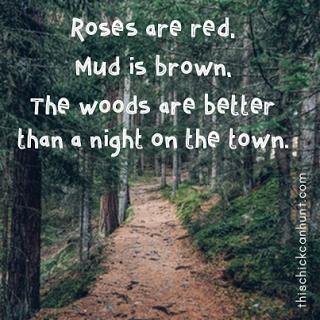
September 7, 2020
Woman Walks Ahead
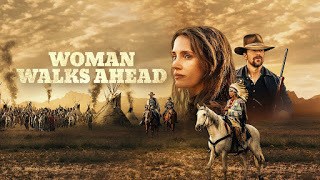
My husband and I are great movie fans. Our television is usually tuned to a movie channel all day. Not that we sit and watch movies all day, but I do stop for a scene here and there, and the audio produces the background sound I need to drown out the constant ringing in my ears.
Since my husband prefers westerns and war movies, I end up watching a lot of films from those genres. Once in a while I come across a real gem as I did last week when I watched the western, Woman Walks Ahead.
This indie film released in 2017, although not historically accurate, is a beautiful portrayal of the emotional bond that developed between a New York widow who traveled to the Dakotas in the 1880’s to paint Sitting Bull's portrait, and the iconic Native American himself.
Filmed in New Mexico, the scenery is breathtaking. Jessica Chastain’s acting is superb, and the portrayal of Sitting Bull as a humble, intelligent human being with a sense of humor is refreshing. Add history’s treatment of this man and his people that ended in the tragedy at Wounded Knee and you have a drama that was for me a real tear-jerker. I haven’t cried that hard for years.
I highly recommend this unheralded movie for its overwhelming hold on the eyes, the brain, and the heart.
August 6, 2020
Life in America in 1910
Below is an email I received that lists a few facts about life in America in the year 1910. If I'd had this list a few years ago, I might have incorporated some of the information in Never Done. (published April 2017)
In the Year of our Lord 1910
The average life expectancy for men was 47 years.
There were only 8,000 cars traveling on 144 miles of paved roads.
The maximum speed limit in most cities was 10 mph.
To buy gas for your automobile, if you owned one, you had to buy it at a drug store.
Only 14 percent of American homes had a bathtub.
Most women only washed their hair once a month, and used Borax or egg yolks for shampoo.
Only 8 percent of homes had a telephone.
More than 95 percent of all births took place at HOME.
Eighteen percent of households had at least one full-time servant or domestic help.
Sugar cost four cents a pound.
Eggs were fourteen cents a dozen.
Coffee was fifteen cents a pound.
The tallest structure in the world was the Eiffel Tower.
The average US wage in 1910 was 22 cents per hour.
The average US worker made between $200 and $400 per year.
1910 wages in a sawmill as a common laborer were $2 a day
A competent accountant could expect to earn $2000 per year, a dentist $2,500 per year, a veterinarian between $1,500 and $4,000 per year, and a mechanical engineer about $5,000 per year.
Ninety percent of all Doctors had NO COLLEGE EDUCATION! Instead, they attended so-called medical schools, many of which were condemned in the press AND the government as 'substandard.'
The Five leading causes of death were:
1. Pneumonia and influenza
2. Tuberculosis
3. Diarrhea
4. Heart disease
5. Stroke
The American flag had 45 stars.
The population of Las Vegas , Nevada was only 30!
Crossword puzzles, canned beer, and iced tea hadn't been invented yet.
There was no Mother's Day or Father's Day.
Two out of every 10 adults couldn't read or write and only 6 percent of all Americans had graduated from high school.
Marijuana, heroin, and morphine were all available over the counter at the local corner drugstores.
Back then pharmacists said, 'Heroin clears the complexion, gives buoyancy to the mind,
Regulates the stomach and bowels, and is, in fact, a perfect guardian of health'.
There were about 230 reported murders in the ENTIRE U.S.A. !
July 2, 2020
Some Punny Takes on the Coronavirus
I find them interesting because they show the versatility of the English language. Although puns may drive translators crazy, they can help teachers of English as a second language show their students the correct usage of words with multiple meanings. Who knows, the teachers might even get a few laughs out of their students.
Lately, the coronavirus has provided writers, comedians, and comic strip creators a new source of inspiration. Today I am sharing an anonymous writer's punny treatment of how the medical community might feel about reopening the country after months of inactivity. I apologize for the slightly distasteful conclusion.
Allergists were in favor of scratching it, but dermatologists advised not to make any rash moves.Gastroenterologists had sort of a gut feeling about it, but neurologists thought the administration had a lot of nerve.Obstetricians felt certain everyone was laboring under a misconception, while ophthalmologists considered the idea shortsighted.Many Pathologists yelled, "Over my dead body!" while pediatricians said, "Oh, grow up!”Psychiatrists thought the idea was madness, while radiologists could see right through it.Surgeons decided to wash their hands of the whole thing, and internists claimed it would indeed be a bitter pill to swallow.
Plastic surgeons opined that this proposal would "put a whole new face on the matter.”Podiatrists thought it was a step forward, but urologists were pissed off at people being back on the streets again.Anesthesiologists thought ending confinement was a gas, and those lofty cardiologists didn’t have the heart to say no.In the end, the proctologists won out, leaving the entire decision up to the assholes in Washington!

June 8, 2020
Summer Vacation
Summer always came shortly after Memorial Day when the school year ended. Although I enjoyed going to school more than many of my classmates, I looked forward to sunny days playing softball, tennis, or kick the can with friends. Plus summer meant Girl Scout Camp and my family's annual trip to Washington state to visit relatives. Three busy months later, I was back in school while Jack Frost was nipping noses and painting treetops.
After graduating from college, I taught high school in the same building where I had attended classes four years earlier. As a teacher, summer vacation was even more important to me than it had been as a child. It meant a break from preparing lessons and grading papers as well as the freedom to empty my bladder when it was full rather than ready to pop. I took a few continuing education classes, and then spent the rest of the season, lying in the sun in my back yard or next to one of many nearby lakes, water skiing, camping, taking trips to San Francisco or Reno.
I taught school for eight years before entering the private sector where, for the first time in my life, I no longer had the whole summer off. Summers in that working environment meant squeezing sun-related activities and short trips into weekends. Vacations at every business I worked for were scheduled, and employees with the most seniority got to choose first. As a newbie, which I was several times due to my habit of job-hopping, I received two weeks for the first five years of employment, three weeks for the next five. I earned five-year status a couple of times but never ten.
In 2007, I retired to what some people treat like a permanent vacation. I had never felt enough confidence in myself as a writer to make it my profession, so for me it was an opportunity to spend all of this newfound time writing. Since retiring I have written and published two novels and numerous short stories, essays and poems. No money to speak of, just lots of satisfaction.
My relationship with summer changed again when my passion for writing was repeatedly interrupted by yard work, house maintenance projects, out-of-town guests and family gatherings. I turned into the rare person (other than a rabid skier or snowboarder) who couldn't wait for the days to grow longer. I appreciated the warmth and sunshine, yet all I could think of was sitting at my computer in the peace and quiet of winter.
This year when summer rolled around, I decided my attitude toward the season was like wishing my life away. I was causing stress for myself, sometimes my loved ones, when I tried to write during or between summer activities. So, other than writing blog posts and editing existing work, I am enjoying a different kind of summer vacation. Now, when people ask what I'm writing, I say, "Nothing, I'm on vacation."
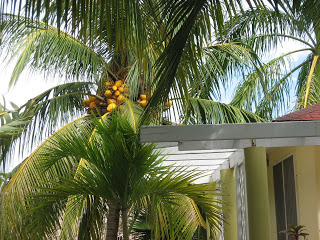
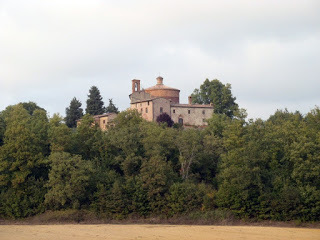
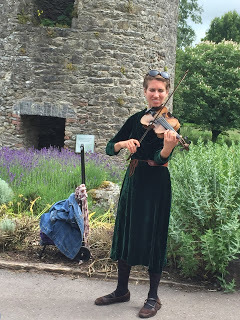
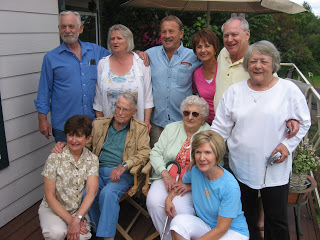
May 6, 2020
Time to Read
My favorite corona virus email by far is the CLEVER arrangement of book spines pictured below. I don't have time to check whether every one is a legitimate title (not photo-shopped) but if they are, the effort it took to put this together is comparable to one of those Rube Goldberg contraptions.

The corona virus has disrupted plans for many of us. We could use this unexpected "vacation" to create something silly or complete some of those household projects on our to-do lists, but let's not forget to use at least part of this opportunity to read.
April 6, 2020
23 Steps to Gooder Grammar
1. Don't abbrev.
2. Check to see if you any words out.
3. Be carefully to use adjectives and adverbs correct.
4. About sentence fragments.
5. When dangling, don't use participles.
6. Don't use no double negatives.
7. Each pronoun agrees with their antecedent.
8. Just between You and i, case is important.
9. Join clauses good, like a conjunction should.
10. Don't use commas, that aren't necessary.
11. Its important to use apostrophe's right.
12. It's better not to unnecessarily split an infinitive.
13. Never leave a transitive verb just lay there without an object.
14. Only Proper Nouns should be capitalized.
15. a sentence should begin with a capital and end with a period
16. Use hyphens in compound-words, not just in any two-word phrase.
17. In letters compositions reports and things like that we use commas to keep a string of items apart.
18. Watch out for irregular verbs which have creeped into our language.
19. Verbs has to agree with their subjects.
20. Avoid unnecessary redundancy.
21. A writer mustn't shift your point of view.
22. Don't write a run-on sentence you've got to punctuate it.
23. Avoid clichés like the plague.
Author unknown


